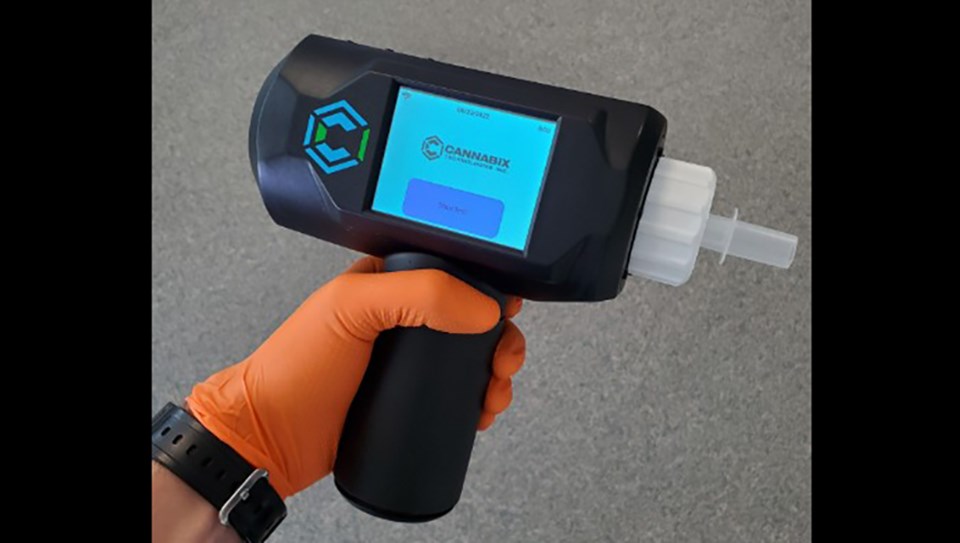A Burnaby-based company is moving forward in its development of a breathalyzer device that would help law enforcement and employers identify people impaired by marijuana during crucial testing timelines.
Cannabix Technologies says its device uses microfludic sensors coupled with machine learning algorithms which operate under principles similar to mammalian olfaction systems.
The device would be able to detect THC through a breath sample.
Cannabix says it is now taking part in a new comprehensive multi-analysis study of subjects under the influence of marijuana.
The study will be conducted alongside toxicologists and law enforcement officers in the southern United States.
Subjects will be tested under the influence of marijuana alongside several other drug screen methods (blood and oral fluids) in conjunction with the Cannabix breathalyzer device.
Cannabix has granted use of its Breach Collection Unit and new MS Breath Sampler equipment for the study.
The company says it's a recent independent study showed correlation between blood plasma and THC with breath samples collected and analyzed with Cannabix's equipment.
The study will be a pivotal step in terms of law enforcement and toxicology audiences.
"The research study is an important opportunity to provide relevant real-world data for regulators and other experts seeking new ways to effectively screen for marijuana impairment," Cannabix said in a news release.
In 2017, the American National Highway Traffic Safety Administration said in a report to congress that THC in blood drops rapidly after someone stops smoking.
Alcohol, which breathalyzers are also used to detect impairment, metabolizes at a steady rate while THC metabolizes much more quickly, followed by a slower drop as lower THC levels are reached.
The report claims within 30 minutes of smoking, THC levels can drop 80 to 90 per cent. After a few hours, the NHSTA says low or no THC can be detected.
Cannabix says its equipment would help authorities quickly and practically identify recent use of marijuana that aligns with the timing of the window of impairment, something it says other methods can't do including saliva and urine.



